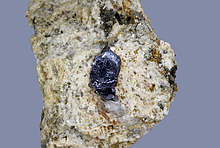Home PageAbout MindatThe Mindat ManualHistory of MindatCopyright StatusWho We AreContact UsAdvertise on Mindat
Donate to MindatCorporate SponsorshipSponsor a PageSponsored PagesMindat AdvertisersAdvertise on Mindat
Learning CenterWhat is a mineral?The most common minerals on earthInformation for EducatorsMindat ArticlesThe ElementsThe Rock H. Currier Digital LibraryGeologic Time
Minerals by PropertiesMinerals by ChemistryAdvanced Locality SearchRandom MineralRandom LocalitySearch by minIDLocalities Near MeSearch ArticlesSearch GlossaryMore Search Options
The Mindat ManualAdd a New PhotoRate PhotosLocality Edit ReportCoordinate Completion ReportAdd Glossary Item
Mining CompaniesStatisticsUsersMineral MuseumsClubs & OrganizationsMineral Shows & EventsThe Mindat DirectoryDevice SettingsThe Mineral Quiz
Photo SearchPhoto GalleriesSearch by ColorNew Photos TodayNew Photos YesterdayMembers' Photo GalleriesPast Photo of the Day GalleryPhotography
╳Discussions
💬 Home🔎 Search📅 LatestGroups
EducationOpen discussion area.Fakes & FraudsOpen discussion area.Field CollectingOpen discussion area.FossilsOpen discussion area.Gems and GemologyOpen discussion area.GeneralOpen discussion area.How to ContributeOpen discussion area.Identity HelpOpen discussion area.Improving Mindat.orgOpen discussion area.LocalitiesOpen discussion area.Lost and Stolen SpecimensOpen discussion area.MarketplaceOpen discussion area.MeteoritesOpen discussion area.Mindat ProductsOpen discussion area.Mineral ExchangesOpen discussion area.Mineral PhotographyOpen discussion area.Mineral ShowsOpen discussion area.Mineralogical ClassificationOpen discussion area.Mineralogy CourseOpen discussion area.MineralsOpen discussion area.Minerals and MuseumsOpen discussion area.PhotosOpen discussion area.Techniques for CollectorsOpen discussion area.The Rock H. Currier Digital LibraryOpen discussion area.UV MineralsOpen discussion area.Recent Images in Discussions
Identity HelpOld Pyrargyrite Label

24th Jul 2016 21:54 UTCRudy Bolona Expert

25th Jul 2016 00:25 UTCAlan Pribula
Rather than "conicle," could it be the word "oxide" in parentheses? Since pyrargyrite isn't an oxide, it wouldn't make much chemical/mineralogical sense, but perhaps at one time it was thought to be one? Or the person who wrote the label mis-identified the sample? Just a thought.
25th Jul 2016 00:35 UTCJohan Kjellman Expert
I think the last word is in brackets, maybe "[oxide]" - if not it is rather "conicles".
Both equally unexplainable??
cheers

25th Jul 2016 00:37 UTCAlfredo Petrov Manager
And I agree with Rudy that it's a lovely specimen!
25th Jul 2016 16:19 UTCRob Woodside 🌟 Manager

25th Jul 2016 19:36 UTCRudy Bolona Expert
25th Jul 2016 20:20 UTCRob Woodside 🌟 Manager

25th Jul 2016 21:45 UTCRichard Gunter Expert
25th Jul 2016 22:27 UTCRob Woodside 🌟 Manager

26th Jul 2016 00:52 UTCRudy Bolona Expert

26th Jul 2016 01:05 UTCThomas Lühr Expert
I can't say whether it is proustite or pyrargyrite, but I agree with Rob the colour leads me more to proustite. The ONLY locality in the Harz where a proustite in such size may come from is one of the mines in the St. Anderasberg district. On the other hand, Proustite is MUCH more rarer there than Pyrargyrite, unlike to the Schneeberg district in Saxony, where it's inversely.
In case it is indeed from the Harz (no reason to doubt it) and it is really proustite then it is from St. Andreasberg - and a treasure !
St. Andreasberg would be also the very most likely locality for pyrargyrite.
Thomas

26th Jul 2016 02:48 UTCRudy Bolona Expert




Mindat.org is an outreach project of the Hudson Institute of Mineralogy, a 501(c)(3) not-for-profit organization.
Copyright © mindat.org and the Hudson Institute of Mineralogy 1993-2024, except where stated. Most political location boundaries are © OpenStreetMap contributors. Mindat.org relies on the contributions of thousands of members and supporters. Founded in 2000 by Jolyon Ralph.
Privacy Policy - Terms & Conditions - Contact Us / DMCA issues - Report a bug/vulnerability Current server date and time: April 20, 2024 03:56:42
Copyright © mindat.org and the Hudson Institute of Mineralogy 1993-2024, except where stated. Most political location boundaries are © OpenStreetMap contributors. Mindat.org relies on the contributions of thousands of members and supporters. Founded in 2000 by Jolyon Ralph.
Privacy Policy - Terms & Conditions - Contact Us / DMCA issues - Report a bug/vulnerability Current server date and time: April 20, 2024 03:56:42














